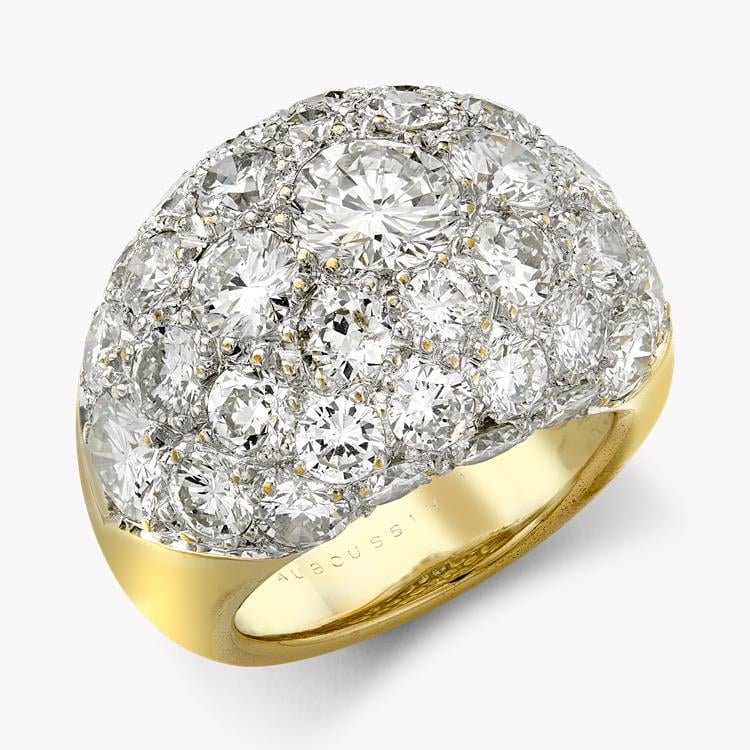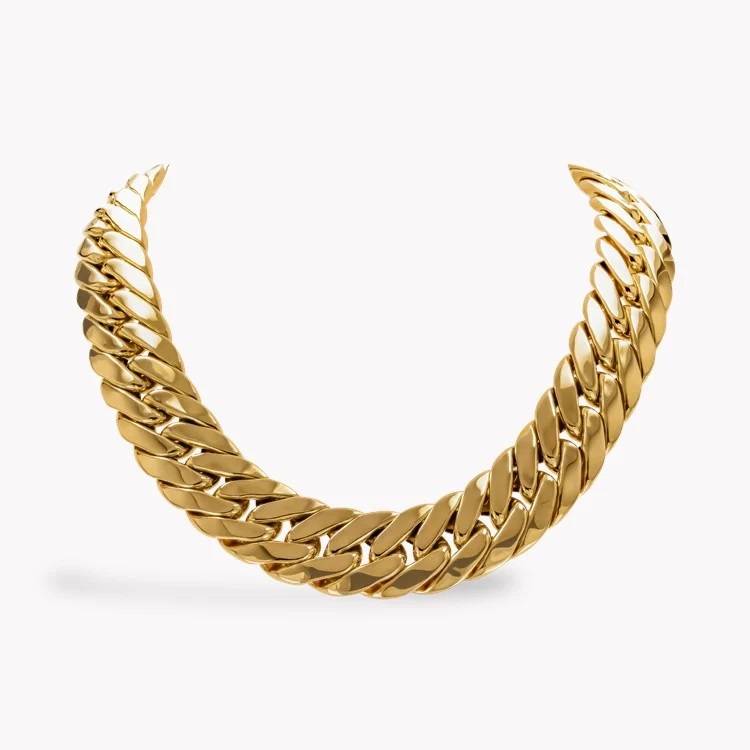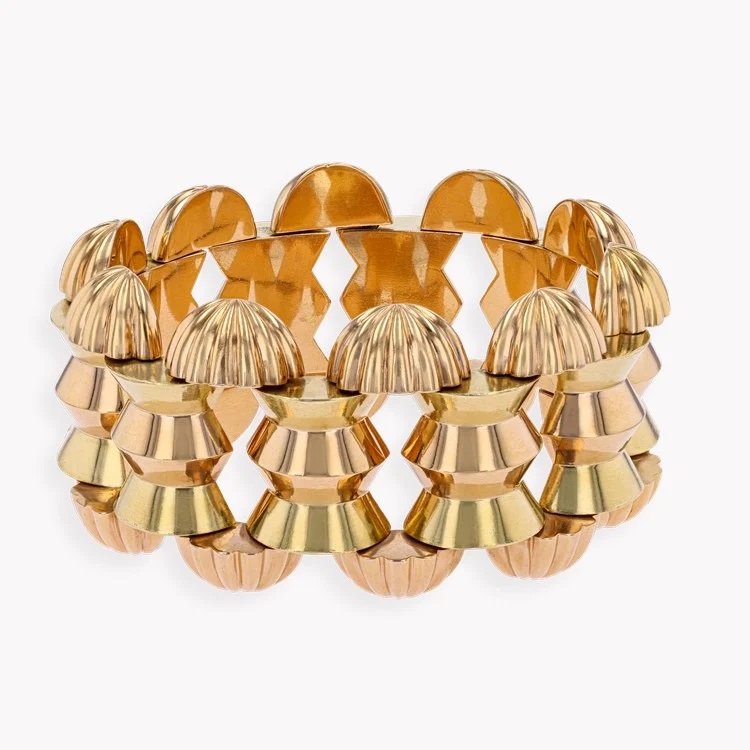The Retro Period
From the Second World War to the swinging sixties, the Retro period is known for its bold sculptural jewellery crafted in highly polished yellow and rose gold. This time of daring and extravagant designs drew inspiration from the luxury of vintage Hollywood glamour. Jewellery featuring large gemstones, such as aquamarine, citrine, and topaz, became highly popular, adding a touch of grandeur to the era. Warmer gold tones characterise these pieces, as platinum was primarily reserved for wartime use.
Iconic designs such as bombé rings, bold ear clips, and chunky chain bracelets emerged during the Retro period, shaping the classic styles that are still celebrated today.

Originating in France, Van Cleef & Arpels produced a collection of jewellery that was exhibited at the 1939 World's Fair in New York. When World War II broke out, the jewellery remained in New York, greatly influencing American jewellery designers throughout the remainder of the war.
Retro jewellery has become highly sought after by collectors. Before 1970, jewellery from the 1940s and 1950s was often melted down and sold for scrap value. As a result, surviving examples of Retro jewellery are now very valuable. The prices of Retro pins, clips, bracelets, and rings have significantly increased in recent years, and this trend is expected to continue. The styles from this era continue to influence modern jewellery design, and the original pieces remain fashionable and relevant.

Oversized emerald-cut gemstones were often used in jewellery, sometimes complemented by smaller stones. Clips, brooches, and rings were frequently made more prominent to create a spectacular appearance. The jewellery often featured large gems to emphasize its grandeur. In the 1930s, substantial gem deposits were found in Brazil during geological excavations to source industrial minerals for the war. Numerous regions in Brazil became renowned for their citrine, aquamarine, kunzite, topaz, chrysoberyl, tourmaline, and amethyst deposits.
During this time, gold was the preferred metal for jewellery-making, as platinum was scarce due to its importance in the war effort. Goldsmiths were known for using over 20 different shades of gold in their work.

Design themes from this era, such as big, flowing ribbons and bows, flowers, and even animals, were all the rage. Wide gold bracelets, oversized dress clips, and earrings worn high up on the ear in fan and scroll motifs were popular styles. However, what truly stood out was the reappearance of charm bracelets. Women from high society collected charms in a huge variety of themes, from tourist attractions to martini glasses, showcasing the cyclical nature of fashion.
Rings were big and bold, featuring large focal gems or covered in small gems set in invisible settings. Technological advances saw the creation of the snake chain, an innovative, flexible style that proved popular due to its lightweight but heavy, chunky appearance. Detachable clips and convertible elements were desirable so jewels could be restyled on a whim. Notable designers of this time were Verdura, Oscar Heyman, Buccellati, William Russer, and Boucheron.
Retro Jewellery at Pragnell
At Pragnell, as a sixth-generation family jeweller, we take pride in upholding our tradition of offering a thoughtfully curated collection of unique vintage retro jewellery from an exciting period. Our extensive selection of retro pieces showcases captivating sculptural designs that complement today's bold gold fashion trend. From stunning statement necklaces to elegant pendants, rings, bracelets, and earrings adorned with sparkling diamonds and vibrant gemstones, these pieces are versatile and perfect for any occasion. Discover an intriguing assortment of vintage retro jewellery at Pragnell, featuring the finest designs from renowned names.
Antique CLP Page
-(1).jpg)
-(1).jpg)